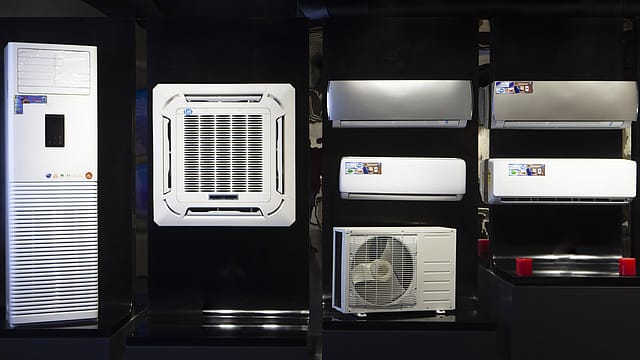Beyond ACs and coolers: How innovation is bridging India’s cooling gap
ADVERTISEMENT

As Indian summers grow more intense and prolonged, the nearly ₹60,000-crore cooling solutions market (organised and unorganised)—spanning air conditioners, fans, and air coolers—is under increasing pressure to evolve. While demand is surging, industry experts say the product mix is still far from meeting the nuanced needs of Indian households.
Despite rising sales—air conditioners are growing at 15–20% annually and fans at around 10%—consumers are often stuck between extremes: the high energy costs and sealed environments of ACs, and the noise, humidity, and hygiene concerns of air coolers. This has created a noticeable “opportunity” in the market for efficient, quiet, and health-conscious alternatives.
“Indian consumers have grown up in open environments. Many still find it uncomfortable to sit in an air-conditioned room all day,” says Rakesh Khanna, vice chairman and managing director at Singer India. “And coolers, while cheaper, often come with their own set of issues—high noise levels, stagnant water, bacterial build-up, and hard-hitting airflow.”
December 2025
The annual Fortune 500 India list, the definitive compendium of corporate performance, is out. This year, the cumulative revenue of the Fortune 500 India companies has breached $2 trillion for the first time. Plus, find out which are the Best B-schools in India.
The penetration of air conditioners in India remains relatively low compared to global standards. Even among users who own ACs, many prefer not to run them all day due to concerns around electricity bills, air quality, and prolonged exposure to recycled air—especially in residential settings where split ACs lack fresh air intake.
Coolers, while more accessible, have seen little meaningful innovation in decades. “From the large window-mounted coolers to the boxy ones wheeled into rooms, the basic technology and experience have stayed the same. Evaporative cooling is effective, but the noise and hygiene drawbacks are real,” Khanna points out. This has given way to a demand for middle-ground solutions that balance cost, comfort, energy efficiency, and design.
Emerging solutions—such as hybrid products that use piezoelectric misting technology to reduce temperature without noisy blowers or water-soaked cooling pads—are beginning to target this underlying need. These devices aim to replicate a breezy, open-air experience while cutting out many of the pain points that come with traditional coolers.
“Consumers today are not just looking for air movement or lower temperatures. They want clean, quiet, and efficient cooling that suits their lifestyle,” says Khanna. He adds that a growing segment of buyers, including elderly users, small offices, and eco-conscious households, are looking for options that don’t require closed spaces or high power consumption.
To bridge that gap, Singer India launched Cloud X, a category-first cooling product in their home appliance segment. The company aims to achieve a growth of 25–30% in this segment.
The shift is being shaped in part by changing consumer behaviour. Younger users are increasingly mindful of energy use and sustainability, while older users often find ACs too harsh for daily use. Additionally, awareness around air quality, especially in urban cities like Delhi NCR & Mumbai, has made filtration and hygiene more important than ever in cooling product design.
Industry players say the cooling market has largely focused on mass production and affordability, leaving little room for real innovation. As a result, most products look and feel the same, without accounting for the fact that people across India live in very different climates, have varied routines, and use these appliances in very different ways.
While energy-efficient fans and inverter ACs have gained some traction, a large portion of India’s unorganised cooler market—estimated to be around 80% of the ₹10,000 crore segment—still operates on outdated designs. The opportunity, therefore, lies in offering alternatives that not only bridge the gap between fans and ACs, but also solve for issues like noise, hygiene, portability, and air purification.
“Our focus for the upcoming fiscal year is to build a strong portfolio in category appliances, enhance our product presence on e-commerce platforms, improve customer experience and post-sales engagement, and continue refining our product offerings across both the sewing and home appliance segments,” says Khanna.
